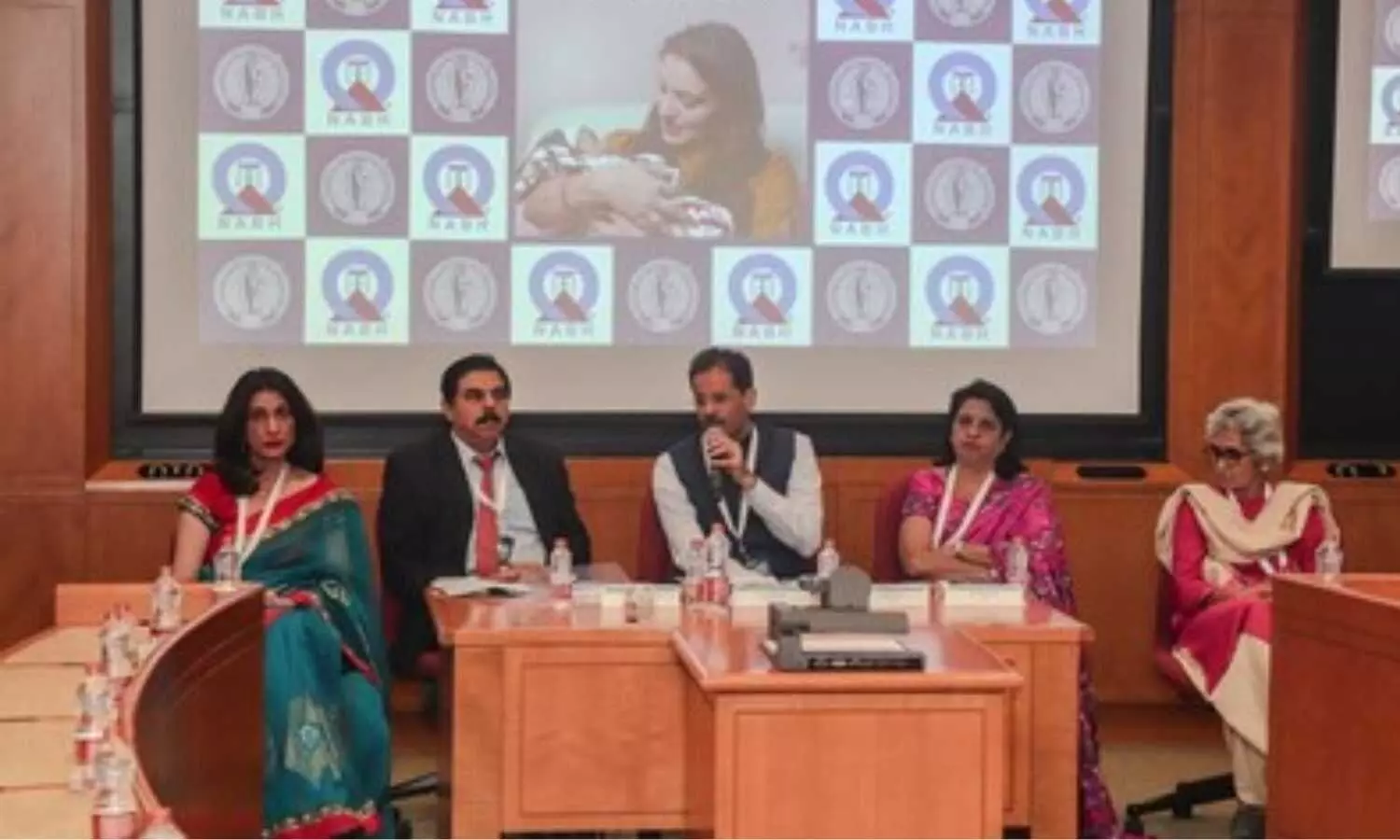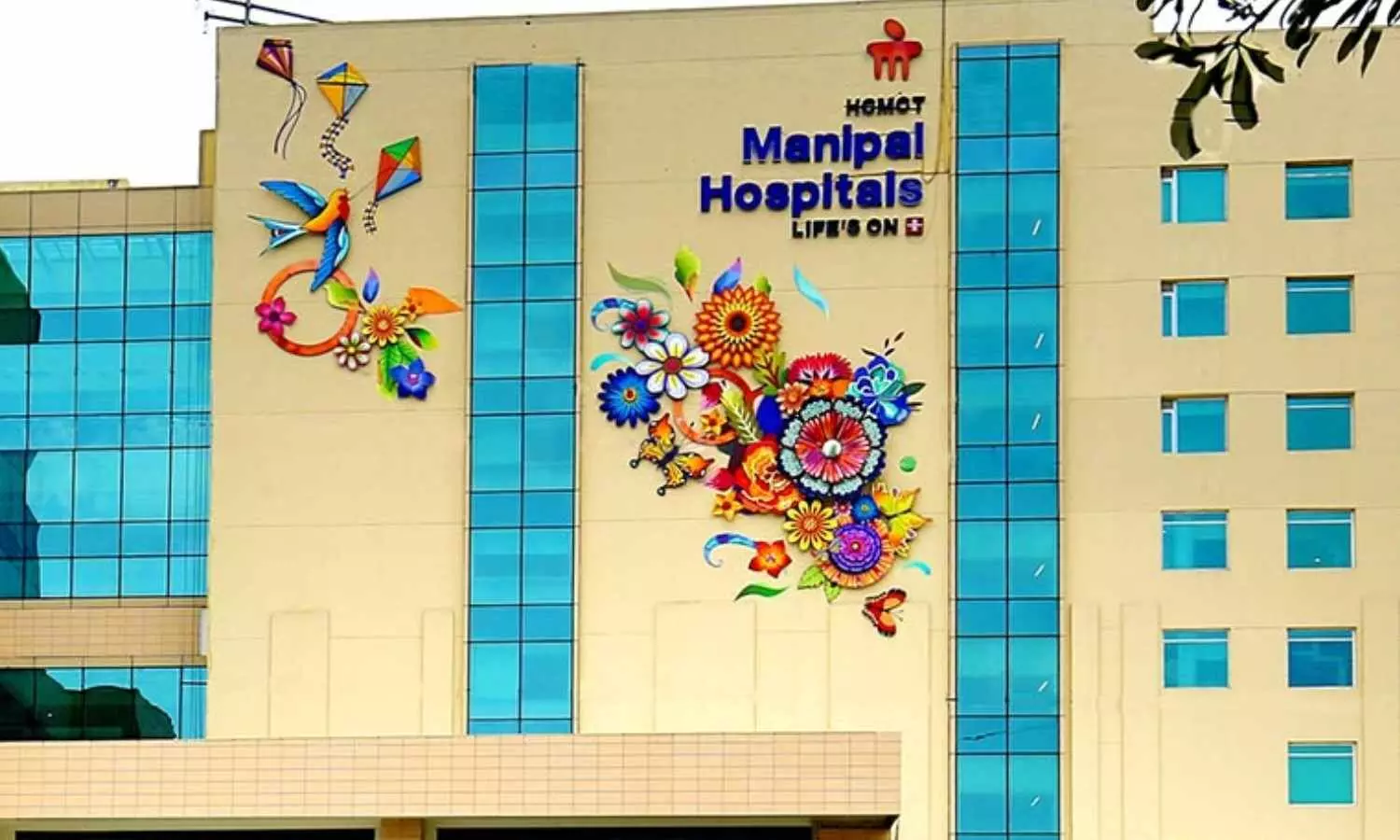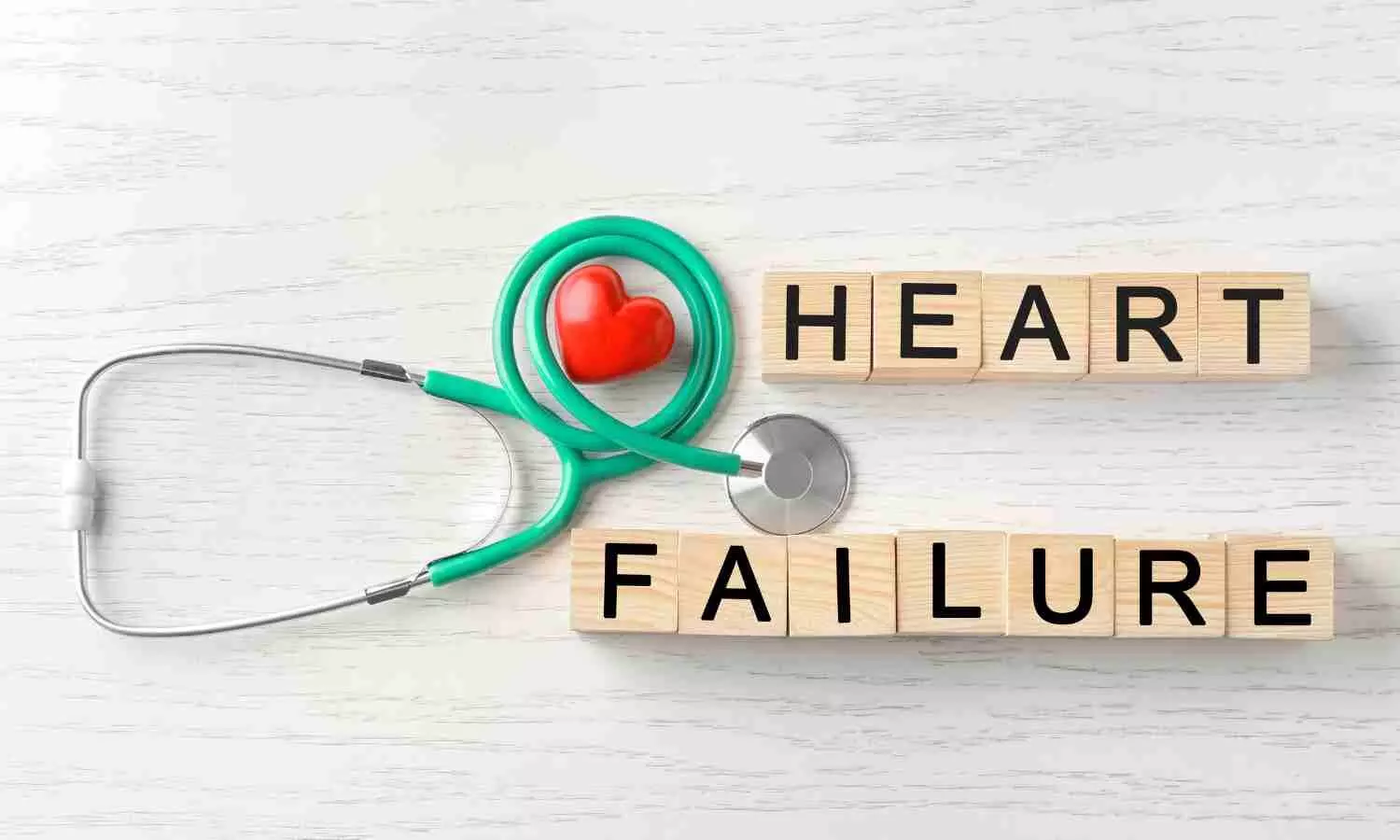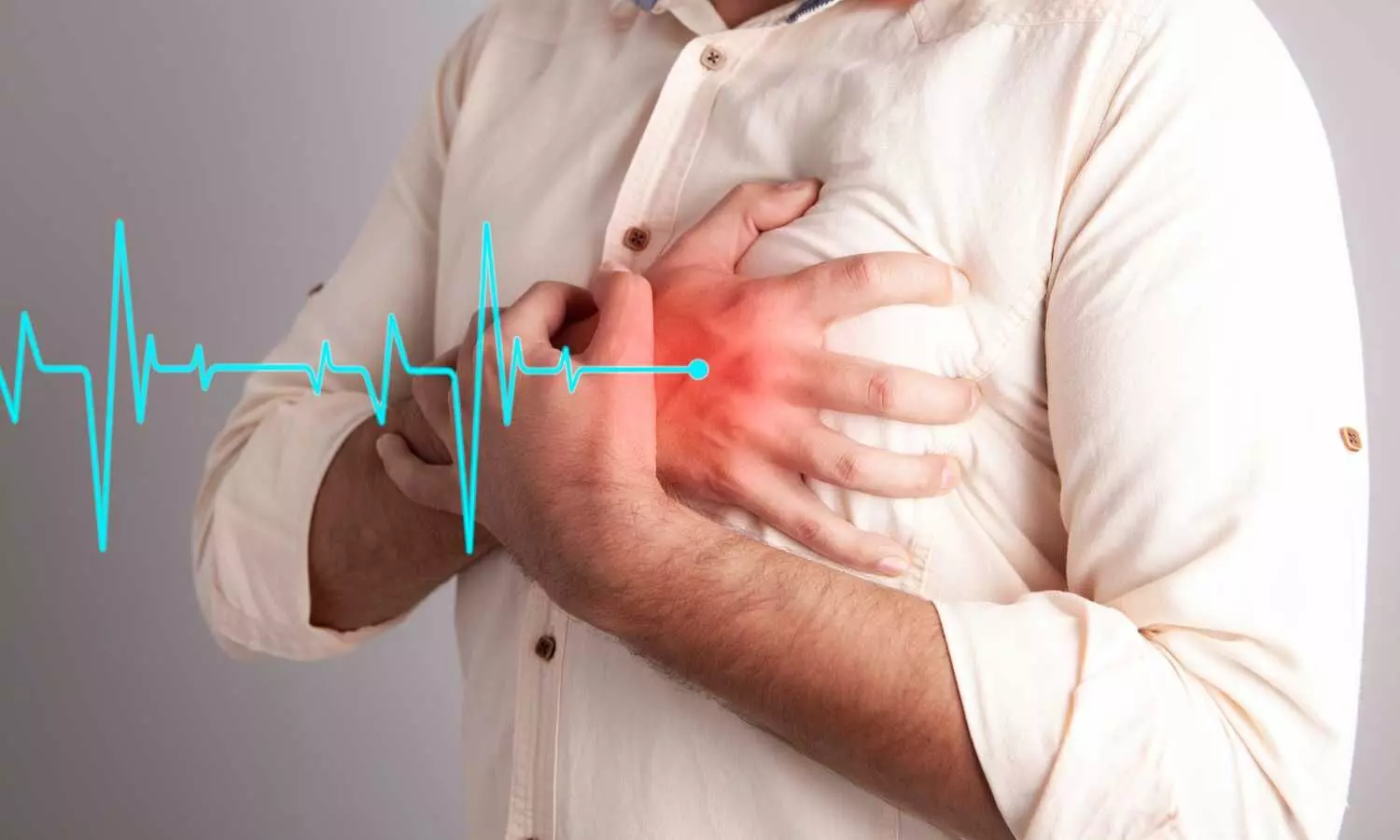Multi-quantifying maxillofacial traits via a demographic parity-based AI model
Powered by WPeMatico
Powered by WPeMatico
Powered by WPeMatico
Powered by WPeMatico
Powered by WPeMatico
Powered by WPeMatico

Mumbai: In an effort to enhance maternal healthcare services and support the goal of achieving Universal Health Coverage, the National Accreditation Board for Hospitals & Healthcare Providers (NABH) has integrated The Federation of Obstetric and Gynaecological Societies of India (FOGSI)’s Manyata maternal health quality standards across NABH Certification programs.
According to the PTI report, this move forms part of a strategic collaboration inked in 2022 between NABH and FOGSI, to improve the quality of maternity services and advance the Indian government’s vision of ‘One Nation One Standard’. By promoting standardization in maternal healthcare through the adoption of uniform standards nationwide, the collaboration will drive systemic improvements and contribute to efforts to achieve Universal Health Coverage.
Manyata is FOGSI’s flagship quality improvement and certification initiative that acts as a stamp of quality ensuring consistent, safe, and respectful care for mothers during and after childbirth. It promotes the adoption of evidence-based clinical standards based on the World Health Organization’s (WHO) standards of quality care in maternal health for antenatal, intrapartum, and postpartum care.
Also Read:Apollo Clinic secures NABH certification for its clinics in Karnataka
To launch the collaboration, a pilot program was conducted where 200 private maternity facilities trained on Manyata standards were assessed by NABH assessors, who were specifically onboarded and trained for this purpose by FOGSI. The pilot results showed consistent certification success rates whether facilities were assessed by FOGSI or NABH assessors.
Moving forward, facilities pursuing NABH Entry-Level certification will be able to achieve dual certifications for NABH and Manyata, validating their compliance with both national healthcare standards and specialized maternity care protocols, with the NABH HOPE portal providing a digital platform for application processing and assessments. Additionally, leveraging its network, FOGSI will identify assessors who will be trained by NABH to create a dedicated pool of NABH assessors specializing in obstetrics and gynaecology.
Reflecting on the announcement, Mr Rizwan Koita, Chairman of NABH said, “Uniform standards are crucial for ensuring that every mother receives consistent care, regardless of where she delivers. By incorporating Manyata guidelines into NABH certification programs, we are not only strengthening our accreditation framework, but also setting a new benchmark for maternal health.
This standardization will play a vital role in transforming maternal care across India. In addition, NABH will incorporate maternal health guidelines into NABH Digital Health Standards for Hospitals and HIS/EMR Systems engaged in mother and childcare.”
Dr Madhuri Patel, Secretary General, FOGSI said, “With 1.3 million Indian women having lost their lives to maternal causes over the past two decades, and despite a 70% overall decline in maternal mortality rates, there is a need to accelerate the progress. To achieve the UN’s 2030 Sustainable Development Goals and realize universal health coverage, we must deepen our resolve to bolstering healthcare systems. By harnessing the power of collaborations we can standardize care protocols, improve service delivery, and create sustainable solutions that enhance maternal healthcare accessibility.”
Dr Hrishikesh D. Pai, Trustee, FIGO Asia Oceania, Immediate Past President, FOGSI, and Chief Administrator, FOGSI-Manyata initiative, remarked, “The collaboration between FOGSI and NABH represents a pivotal step towards fostering a culture of excellence, accountability, and patient-centric care in the private healthcare sector. We are dedicated to building on this success and broadening the impact of the initiative. It will not only encourage wider adoption of best practices but also forge a path towards a future where every childbirth experience is safe, supported and dignified”, news agency PTI reported.
Dr Rishma Pai, Former President, FOGSI said, “By embedding Manyata’s comprehensive protocols into NABH’s certification guidelines, we aim to create a robust, unified system that elevates the quality of maternal care across the board. Expanding access to quality healthcare and standardizing the care delivered is not merely a goal but a moral imperative-one that will ensure the safety of every mother and child who visit these facilities.”
Preventable maternal deaths continue to be a significant concern in India. The announcement promises a welcome step towards addressing the issue. Establishing standardized care protocols in the healthcare sector is critical to enhance the delivery of maternal care in India, helping achieve better health outcomes.
Additional quotes from key stakeholders, who are not present in the room but have shared their perspectives, are included below:
Dr. Atul Mohan Kochhar, CEO of NABH said, “The integration of Manyata’s standards into our accreditation process marks a transformative step toward enhancing safe maternal healthcare. This collaboration allows us to align our efforts with FOGSI’s expertise, ensuring that accredited hospitals meet comprehensive maternal health protocols. Our aim is to create a sustainable model for quality accreditation that benefits mothers and newborns nationwide.”
Dr. Hema Divakar, National Convener, FOGSI-Manyata initiative said, “This announcement reflects FOGSI and NABH’s shared vision of ensuring that every mother, regardless of her circumstances, receives the compassionate and exceptional care she deserves.
Through a joint Technical Working Group, with members from FOGSI and NABH, we are working to streamline the quality standards to ensure they represent an ideal blend of infrastructure and labor room compliance, serving the best interests of mothers and newborns. This strategic alignment not only reinforces our commitment to patient safety and clinical excellence but also highlights the benefits of a unified approach to delivering high-quality, standardized care.”
Also Read:First in Vadodara: Parul Sevashram Hospital achieves NABH Platinum Level Digital Accreditation
Powered by WPeMatico

Andhra Pradesh- Dr NTR University of Health Sciences (Dr NTRUHS) is inviting applications from candidates who fulfil the eligibility criteria for admission to PG AYUSH i.e. MD (Homeo) and MD/MS (Ayurveda) courses under the competent authority quota of Dr. NTRUHS for the academic year 2024-25. On this, Dr NTRUHS has released a notification detailing the fees, qualifying percentile, etc regarding the admission to said courses.
The eligible candidates can apply for the PG AYUSH i.e. MD (Homeo) and MD/MS (Ayurveda) courses admission under the competent authority quota of Dr NTRUHS 2024 from today i.e. 15th November 2024, 09.00 AM to 18th November 2024, 06.00 P.M.
REGISTRATION FEES
|
S.NO |
CATEGORY |
REGISTRATION FEE INCLUDING 18% GST |
TOTAL AMOUNT |
|
BHMS & BAMS Completed Within AP |
|||
|
1 |
OC/BC |
Rs.5,900/- (5,000/- + 900/- GST 18%) |
Rs.5,900/- |
|
2 |
SC/ST |
Rs.4, 956/- (4,200/- + 756/- GST 18%) |
Rs.4,956/- |
|
S.NO |
CATEGORY |
REGISTRATION FEE INCLUDING 18% GST |
IN ADDITION TO REGISTRATION & VERIFICATION FEE INCLUDING 18& FE |
TOTAL AMOUNT |
|
BHMS & BAMS Completed Outside AP |
||||
|
1 |
OC/BC |
Rs.5,900/- (5,000/- + 900/- GST 18%) |
Rs.3,540/- (3,000/- + 540/- GST 18%) |
Rs.9,440/- |
|
2 |
SC/ST |
Rs.4, 956/- (4,200/- + 756/- GST 18%) |
Rs.3,540/- (3,000/- + 540/- GST 18%) |
Rs.8,496/- |
However, it is to be noted that once the fee is paid will not be refunded under any circumstances.
ELIGIBILITY
National Commission for Homoeopathy (NCH) & National Commission for Indian System of Medicine (NCISM), Ministry of AYUSH, Govt. of India New Delhi notified that the minimum qualifying percentile criteria of AIAPGET-2024 are reduced by Fifteen percentile across all categories for admission into PG ASU i.e., MD (Homoeo) & MD/MS (Ayurveda) courses for the Academic year 2024-25. Therefore, candidates having the following qualifying cut-off scores and above are eligible to apply for PG AYUSH i.e., MD (Homoeo) & MD/MS (Ayurveda) Courses-
|
S.NO |
CATEGORY |
REVISED MINIMUM QUALIFYING CRITERIA |
|
1 |
General Category (UR/EWS). |
35th percentile |
|
2 |
OBC/SC/ST. |
25th percentile |
|
3 |
General (UR) Category (EWS/PwBD) Persons with Benchmark Disability. |
30th percentile |
|
4 |
OBC/SC/ST/ (PwBD) Persons with Benchmark Disability. |
25th percentile |
To view the notification, click the link below
Powered by WPeMatico

New Delhi: Recently, doctors at HCMCT Manipal Hospital saved a 2-year-old child with mercury poisoning following the accidental ingestion of mercury from a broken thermometer.
The child was brought to the hospital after the thermometer broke in his mouth. Initially, there were no visible signs of abdominal pain or vomiting, making it difficult to assess the extent of mercury ingestion.
The child was initially managed conservatively with laxatives under close observation, as the exact amount of mercury ingested was unknown. All routine tests, including serum and urine mercury levels, were conducted. However, despite the use of laxatives, an abdominal X-ray revealed a substantial amount of mercury spread throughout the bowel, posing significant health risks.
After 48 hours with no improvement in mercury clearance, Dr. Sufla Saxena, Head of Pediatric Gastroenterology and Hepatology, and her team proceeded with an urgent colonoscopy. During the procedure, mercury was located throughout the large bowel and at the tip of the appendix. A comprehensive bowel lavage was conducted (a procedure that involves flushing out the large intestine with liquid to clean it) to flush out the mercury from the colon.
Also Read:Manipal Hospitals set new Guinness World Record of 3319 CPR performances within 24 hours
The procedure went well, and the child was discharged the very next day. A follow-up X-ray confirmed that the mercury was fully cleared, eliminating the need for chelation therapy. This timely intervention successfully prevented the potential dangers of mercury toxicity.
Commenting on the case, Dr Sufla Saxena, Head of Pediatric Gastroenterology and Hepatology, HCMCT Manipal Hospital, Dwarka said, “Acute or chronic mercury exposure can cause adverse effects during any period of development. Mercury is a highly toxic element and can have devastating effects on critical organs such as the heart, central nervous system, and kidneys.
With early diagnosis and opting for the procedures at the right time, we were able to prevent the dangerous effects of mercury exposure and ensure the child’s recovery without complications. This case highlights the important role of timely and advanced pediatric care in managing toxic exposures.”
Also Read:HCMCT Manipal Hospital, Dwarka, Pfizer join hands to launch Centre of Excellence for Adult Vaccination
Powered by WPeMatico

A research team from the Nagoya University Graduate School of Medicine has discovered a promising way to slow the progression of heart failure in mice. They fed mice a diet rich in the soybean protein, β-conglycinin (β-CG), which can support heart health by influencing gut bacteria. Their analysis revealed that the soybean protein rich diet increased the production of the short-chain fatty acids (SCFAs) in the intestine that play a role in protecting the heart. Their findings were published in Clinical Nutrition.
Many people with heart problems try to eat a nutritious diet to reduce their risk of disease. As part of a healthy diet, soybeans have long been recognized for their antioxidant and anti-inflammatory properties. Based on this, the researchers suspected that proteins in soy may help prevent heart damage.
Dr. Nozomi Furukawa and colleagues fed the soy-derived protein β-CG to mice prone to heart failure and investigated its effects on the heart. The mice showed improved heart function, less muscle thickening, and reduced scarring of the heart tissue, common problems associated with the progression of heart disease.
Analysis of bacteria in the gut identified an increase in three types of SCFA-producing bacteria (Butyricimonas, Marvinbryantia, and Anaerotruncus) as well as concentrations of SCFAs that maintain gut health (acetic acid, butyric acid, and propionic acid).).
These findings suggest that β-CG helps prevent heart damage, at least in part, by promoting the growth of SCFA-producing bacteria in the intestine. Bacteria produce SCFAs in the large intestine during the digestion of fiber and other foods. SCFAs are known to have anti-inflammatory properties and to play a role in maintaining intestinal health. However, their findings suggest they may also help protect the heart from damage caused by high blood pressure.
“An important aspect of this study is that functional soy components showed beneficial effects on the heart,” Furukawa said. “Previously, effects on obesity have been shown, but the effects on cardiovascular disease were not known. Importantly, β-CG intake increases major SCFAs and their producing bacteria as a change in the gut microbiota. These SCFAs may inhibit the progression of heart failure.”
When the researchers used antibiotics to reduce the population of these SCFA-producing microbes in mice, the protective effects of β-CG disappeared. This suggested that the gut microbiota is crucial for β-CG’s heart-protective action. To confirm this, they administered sodium propionate, one of the SCFAs, to the mice and found that it had similar effects to feeding the mice β-CG, reinforcing the idea that SCFAs are a key part in reducing heart damage.
Although the researchers performed this study on mice, the findings suggest that similar mechanisms may help treat heart failure in humans. β-CG or its derivatives could potentially be developed into therapeutic agents that help prevent or slow the progression of heart failure, offering a more natural solution to a major health problem.
“Of course, soy and its components, such as β-CG, may not be effective for all people, especially those with allergies,” Furukawa explained. “In the future, our team will focus on the structure within β-CG and investigate the detailed molecular mechanism of the increase in short-chain fatty acids that show cardioprotective effects, with the aim of developing new treatment and prevention methods.”
The researchers hope that it leads to new ways to treat heart disease through diet and gut health, highlighting the connection between what we eat and how our bodies, particularly our hearts, respond. With heart failure being one of the leading causes of death worldwide, these findings could have a lasting impact on how we maintain a healthy heart.
Reference:
Nozomi Furukawaa, Soy protein β-conglycinin ameliorates pressure overload-induced heart failure by increasing short-chain fatty acid (SCFA)-producing gut microbiota and intestinal SCFAs, Clinical Nutrition, DOI: 10.1016/j.clnu.2024.09.045.
Powered by WPeMatico

Exposure to temperatures of 100°F (38°C) or higher may nearly triple the number of episodes of a form of irregular heart rhythm, known as atrial fibrillation or AFib, in people with implantable cardioverter defibrillators (ICDs), according to a preliminary study to be presented at the American Heart Association’s Scientific Sessions 2024.
The meeting, Nov. 16-18, 2024, in Chicago, is a premier global exchange of the latest scientific advancements, research and evidence-based clinical practice updates in cardiovascular science.
“AFib is becoming more prevalent both in the U.S. and globally, with its incidence rising at an alarming rate,” said study lead author Barrak Alahmad, M.D., Ph.D., M.P.H., a research fellow in environmental health at the Harvard T.H. Chan School of Public Health in Boston.
It is estimated that more than 12 million people will be living with AFib by 2030, according to the American Heart Association’s 2024 Heart Disease and Stroke Statistics. Heart disease and other medical conditions increase the risk of developing atrial fibrillation; however, the role of heat-induced stress in triggering this condition remains understudied.
Researchers examined health data for more than 2,000 U.S. adults with an implanted cardioverter-defibrillator (ICD) or cardiac resynchronization therapy defibrillator (CRT-D) device implanted between 2016 and 2023 across more than 100 cities in the U.S. These electronic devices are inserted into a person’s chest to monitor and regulate the heartbeat.
For each patient, the first episode of atrial fibrillation detected on the device was matched to hourly outdoor temperature data on the day of the episode for the location of the hospital or health care center where they received their device. Researchers then categorized the AFib episodes for each study participant by the time of day and day of the week with corresponding outdoor temperatures. The aim was to determine the effect, if any, of being exposed to temperatures that exceeded 100°F (38°C) in their geographical location. The relationship between outdoor heat and episodes of atrial fibrillation was determined for the whole study population.
The study found:
Compared to optimal outdoor temperatures between 41°F and 46.4°F (5°C to 8°C ), which had the lowest odds of causing an episode of AFib, when outdoor temperatures reached 102.2°F, 104°F and 105.8°F (39°C, 40°C and 41 °C), the odds of experiencing an episode of AFib were 2.66 times higher, 2.87 times higher and 3.09 times higher, respectively.
Fewer AFib episodes occurred in the early morning hours (12 a.m. to 7 a.m.) compared to standard working hours (8 a.m. to 5 p.m.).
Episodes of AFib were more common on weekdays than weekends.
An additional analysis that evaluated episodes of AFib that lasted longer than 30 minutes found similar results.
“We need to understand the physiological processes underlying these findings and concentrate on preventing conditions that trigger AFib to minimize the burden of arrhythmias,” said study co-author Theofanie Mela, M.D., a cardiac electrophysiologist at Massachusetts General Hospital in Boston. “In the meantime, we recommend patients avoid extreme temperatures and use air conditioners so that they do not expose their bodies to the severe stress of extremely high heat.”
American Heart Association volunteer expert Sanjay Rajagopalan, M.D., M.B.A., FAHA, who chaired the Association’s 2024 policy statement on transforming key urban provisioning systems to heart-health and sustainability outcomes, noted that heat stress has been implicated in an increase in cardiovascular disorders, including stroke, heart attack and cardiovascular death. However, few studies have examined the link between atrial fibrillation and heat stress.
“This may be the first study that has linked ICD detection of AFib with temperature spikes,” said Rajagopalan, chief of cardiovascular medicine at University Hospitals Harrington Heart and Vascular Institute and a professor at Case Western Reserve University, both in Cleveland. “These findings reiterate other recent research about the link between outdoor temperature and cardiovascular health. Given the rising prevalence of AFib in the general population due to increasing age and the prevalence of obesity, we now may also have to contend with rising temperatures.
“Susceptible individuals living in areas at risk for markedly increased temperatures should take note of these findings and ensure that they take appropriate precautions to stay cool and hydrated,” he added. “Unfortunately, the most vulnerable people may be those in lower socioeconomic groups who may not have access to air conditioning and other means of sheltering during warm days.”
Overall, this study cannot draw definitive conclusions for several reasons. Local weather stations measured temperatures where the patients received their ICDs, and this may not be the same as where patients lived. As a result, it’s impossible to be certain that study participants were exposed to the high temperatures recorded by the local weather stations.
Powered by WPeMatico
